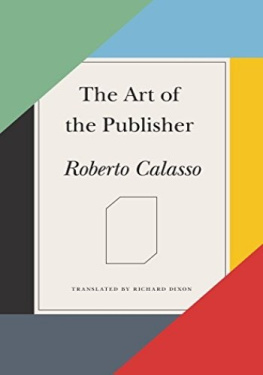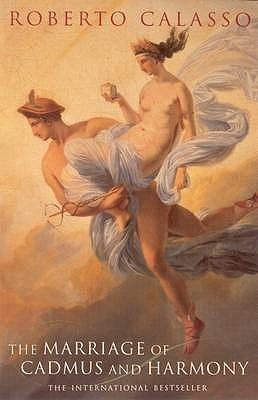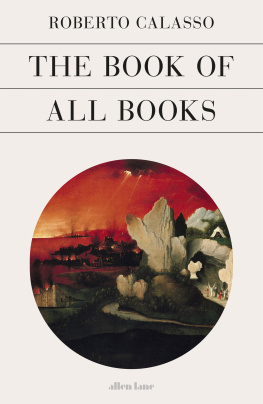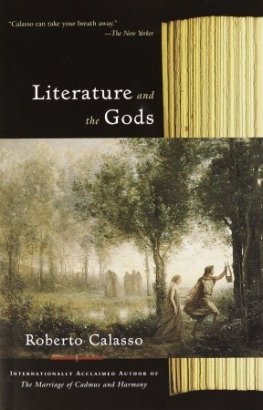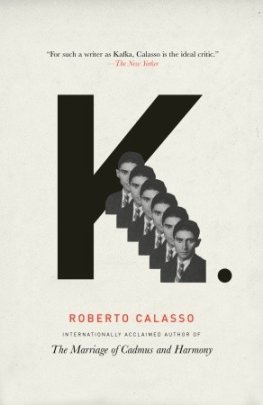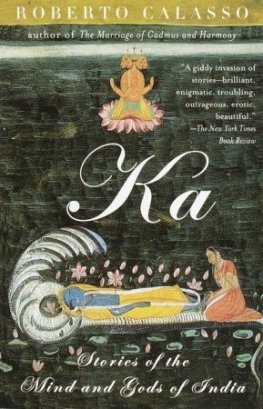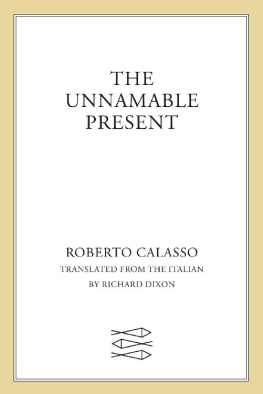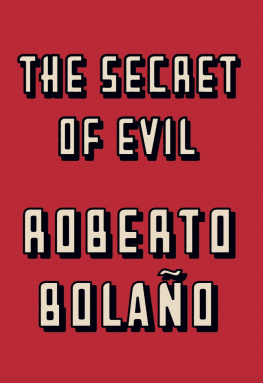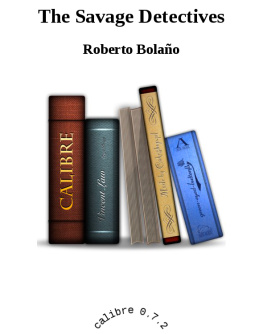The author and publisher have provided this e-book to you for your personal use only. You may not make this e-book publicly available in any way. Copyright infringement is against the law. If you believe the copy of this e-book you are reading infringes on the authors copyright, please notify the publisher at: us.macmillanusa.com/piracy.
Id like to address something that is generally taken for granted, but turns out not to be so obvious: the art of publishing books. And first of all I would like to consider the notion of publishing itself, for it seems to be shrouded by a number of misunderstandings. If someone is asked what a publishing house does, the general and most reasonable answer is the following: it is a lesser branch of industry that tries to make money publishing books. And what should a good publishing house be? We suppose a good publishing house to be oneif youll allow the tautologythat publishes, so far as possible, only good books. Thus, to use a summary definition, those books of which the publisher tends to feel proud rather than ashamed. From this point of view, a good publishing house is unlikely to be of any particular interest in economic terms. Publishing good books has never made anyone terribly rich. Or, at least, not in comparison with what someone might make supplying the market with mineral water or microchips or buttons. It would appear that a publishing business can produce substantial profits only on condition that good books are submerged beneath many other things of very different quality. And when you are submerged, it is much easier to drownand so disappear altogether.
It is also worth remembering that publishing has often shown itself to be a sure and rapid way of squandering substantial amounts of money. One might even add that, along with roulette and cocottes , founding a publishing house has always been one of the most effective ways for a young man of noble birth to fritter away his fortune. If this is so, we might wonder why the role of the publisher has attracted so many people over the centuriesand continues to be regarded as fascinating, and in some ways mysterious, even today. For example, it is not hard to see that no job title is more coveted by certain tycoons, who often obtain it literally at a high price. If such people were able to declare that they publish frozen vegetables, rather than produce them, they would presumably be very happy about it. We can therefore conclude that, apart from being one branch of business, publishing has always involved prestige, if only because it is a kind of business that is also an art. An art in every sense, and certainly a dangerous art since, in order to practice it, money is an essential element. From this point of view it can be argued that very little has changed since Gutenbergs time.
And yet, if we look back over five centuries of publishing and try to think of publishing as an art, we immediately see paradoxes of every kind. The first might be this: on the basis of what criteria can the greatness of a publisher be judged? On this point, as a Spanish friend of mine often used to say, there is no bibliography. We can read many learned and detailed studies of the work of certain publishers, but rarely do we come across any judgment about their greatness, as normally happens when dealing with writers or painters. So what goes into making a publisher great? A few examples: the first, and perhaps the most eloquent, takes us back to the origins of publishing. A phenomenon occurred in printing that would later be repeated with the birth of photography. It seems that we were introduced to these inventions by masters who immediately achieved an incomparable excellence. To understand what is essential about photography, all you have to do is study the work of Nadar. To understand what a great publishing house can be, all you have to do is look at the books printed by Aldus Manutius. He was the Nadar of publishing. He was the first to imagine a publishing house in terms of form . And here the word form has to be interpreted in many different ways. Form is crucial, first of all, in the choice and sequence of titles to be published. But form also relates to the texts that accompany the books, as well as the way in which the books are presented as objects. It therefore includes covers, graphics, layout, typeface, paper. It was usually Aldus himself who wrote those short introductory textsin the form of letters or epistulae that are the precursors not only of all modern introductions, prefaces, and afterwords, but also of all cover flaps, catalogs, and publicity material of today. That was the first indication that all books published by a certain publisher could be seen as links in a single chain, or segments in a serpentine progression of books, or fragments in a single book formed by all the books published by that publisher. This, obviously, is the most hazardous and ambitious goal for a publisher, and so it has remained for five hundred years. And if you think that this is an unworkable enterprise, you may remember that literature loses all of its magic unless theres an element of impossibility concealed deep within it. I believe that something similar can be said about publishing, or at least this particular way of being a publishera way that has not been practiced very often over the course of the centuries, but has sometimes produced memorable results. To give a sense of what can emerge from this conception of publishing, I will describe two books published by Aldus Manutius. The first was published in 1499 with the abstruse title Hypnerotomachia Poliphili , The Strife of Love in a Dream. Today it would be called a first novel. Moreover one by an unidentified author (and still an enigma), written in a sort of imaginary language, a sort of Finnegans Wake consisting entirely of a mishmash of Italian, Latin, and Greek (while Hebrew and Arabic appeared in the woodcuts). A fairly risky operation, you might say. But what did the book look like? It was a folio edition, illustrated with magnificent woodcuts that provided a perfect visual accompaniment to the textsomething even more risky. But at this point we have to add something else: the vast majority of bibliophiles regard it as the most beautiful book ever printed. And you can see this for yourself if you ever happen to come across a copy of the book, or even just a good facsimile. It was obviously a single, unrepeatable stroke of genius. And in creating it the publisher played a fundamental part. But you mustnt imagine that Manutius was great only as a provider of treasures for bibliophiles of future centuries. The second example that relates to him goes in a totally different direction. In 1501 and 1502, with his Virgil and Sophocles, Manutius invented libelli portatiles in formam enchiridii (books that can be held in the hand), otherwise described by him as parva forma. Anyone fortunate enough to handle one of them today would immediately realize that they are the first pocket-sized books in history, the first paperbacks. By inventing such a book, Manutius transformed the way in which people read. The very act of reading thus radically changed. Looking at the title page, we can admire the elegance of the Greek italic typeface used here for the first time and which would later become an invaluable point of reference. Manutius therefore managed to achieve two opposite results: first to create a book such as the Hypnerotomachia Poliphili that would remain unequaled, and is virtually the archetype of a book that is one of a kind. Then, to create completely different books that would be copied millions and millions of times over, right up until today.
You may say, fine, this is all very interesting and relevant to the glories of the Italian Renaissance, but what does it have to do with us, and with publishers today, who are inundated by a growing mass of tablets, e-books, and DVDsnot to mention the various incestuous alliances between all these devices? In order to answer this question Ill give a few more examples. If I told you in no uncertain terms that in my view a good publisher today ought simply to try to do what Manutius did in Venice a year before the start of the sixteenth century, you might think Im jokingbut Im not. And so Ill tell you about a twentieth-century publisher and show you how he worked in exactly that way, even though the circumstances were completely different. His name was Kurt Wolff. He was a young German, elegant, wealthy, though not excessively so. He wanted to publish new writers of high literary quality. And so he invented a series of short books, in an unusual format, called Der Jngste Tag, Judgment Day, a title that today seems highly appropriate for a series of books that mostly appeared in Germany during the First World War. If you look at these books, which are black in color, slim and austere, with labels glued on like school exercise books, you may find yourself thinking: This is how a book by Kafka ought to be presented. And several of Kafkas stories were in fact published in this series. These included The Metamorphosis , in 1915, with a fine blue label and a black border. Kafka was a young, little-known, and extremely self-effacing writer at the time. But, reading the letters Kurt Wolff wrote to him, you are immediately aware, from his exquisite tact and gentle concern, that the publisher simply knew who his correspondent was.
Next page
